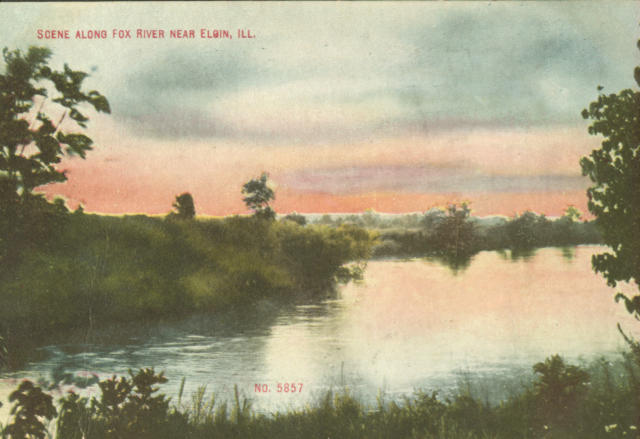Fox
River Map
Project

http://postcards.daisyfield.com/lores/ILElginFoxRiverTwilightc1908.jpg
Project Plan
Learner
Outcomes:
Students will be able
to:
·
use GPS technology to gather
data and create scaled GIS maps using GPS data
·
carry out stream monitoring
tests and accurately collect and analyze original data
·
develop a reasonable correlation
between land uses and water quality and create a proposal for an intervention to
influence local resource management decisions of the Fox River Watershed.
Science – 11A3a, 11A3c,
11A3d, 11A3e, 11A3f, 11A3g, 11B, 13B3e, 13B3f
Math – 7A3a, 7A3b, 7B3,
7C3a, 10A3a, 10A3c, 10B3
Social Studies – 17A3a,
17A3b, 17B3b, 17C3a
English – 3B3c, 5A,
5C
Authentic
Task:
Time in September will be
spent creating a learning opportunity and awareness about watersheds and how
students are directly linked to the Fox River Watershed. This awareness will lead to an
appreciation and allow students to become caretakers of their local
watershed.
In
October, students will use data to identify specific threats to local water
quality, by gathering stream water quality data and GPS data. Students will then develop maps that
illustrate land use and water quality throughout the Fox River Watershed. They will analyze the data on their maps
and develop a reasonable correlation between land use and water quality, and
submit appropriate recommendations for action. These recommendations will be made to
various local agencies at a student-led conference
Hook:
A
local state representative will visit the students and discuss how funding has
been cut on studies related to preserving the
Student-Directed
Learning:
·
Students will select their
own small groups for this study
·
Groups will select one water
quality test to perform and analyze
·
Groups will select GPS sites
to gather data
·
Student groups will decide
what data to compile on the final maps
·
Students will decide how to
present their data correlations
·
Students can join a
committee held after school that will attend and present their interventions the
local conference
Best Use of
Technology:
·
Students will use technology
to communicate with students from
·
Technology will also be used
to communicate with various sites along the river to share data and
experiences
·
GPS technology will be lent
to students to gather data
·
Students will access the
compiled data and maps from online agencies
·
Students making
presentations at the conference will create multimedia presentations as part of
their correlation report
Assessment:
·
Students will be assessed
through continuous teacher observation during work, collaboration and jigsaw
times.
·
Students will collect water
quality data on biological monitoring data sheets and will be assessed for
accuracy and completeness before being forwarded to other agencies (these data
forms are attained from Friends of the
·
Students will create
watershed maps that include water quality data and GPS
data
·
Students will create a
public awareness campaign incorporating their data, correlations the see between
land use and water quality, and recommend a course of action to
take